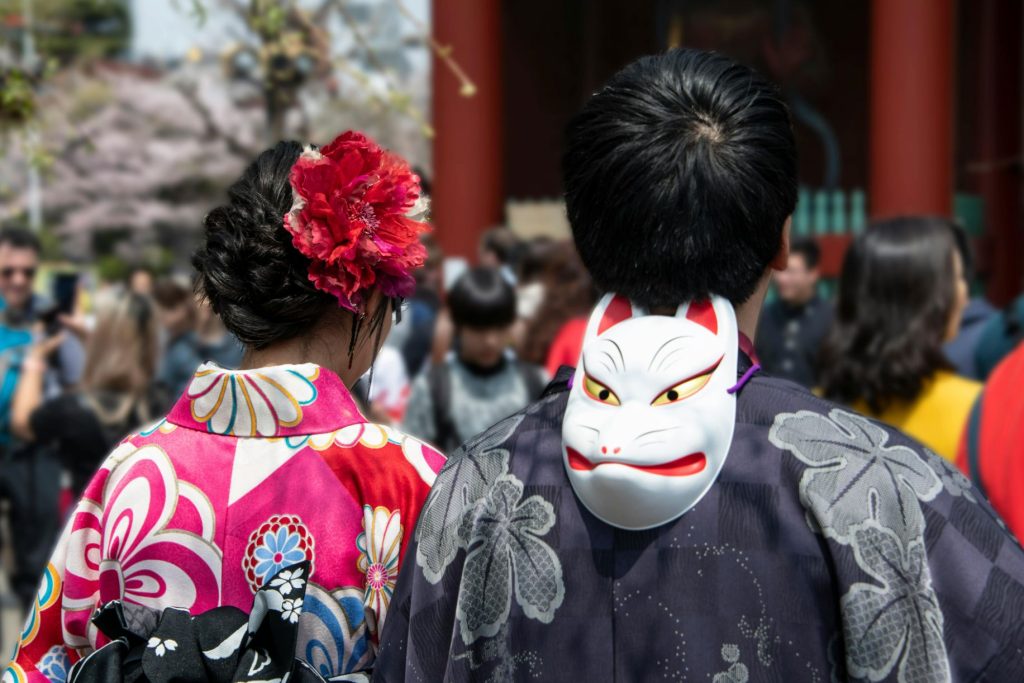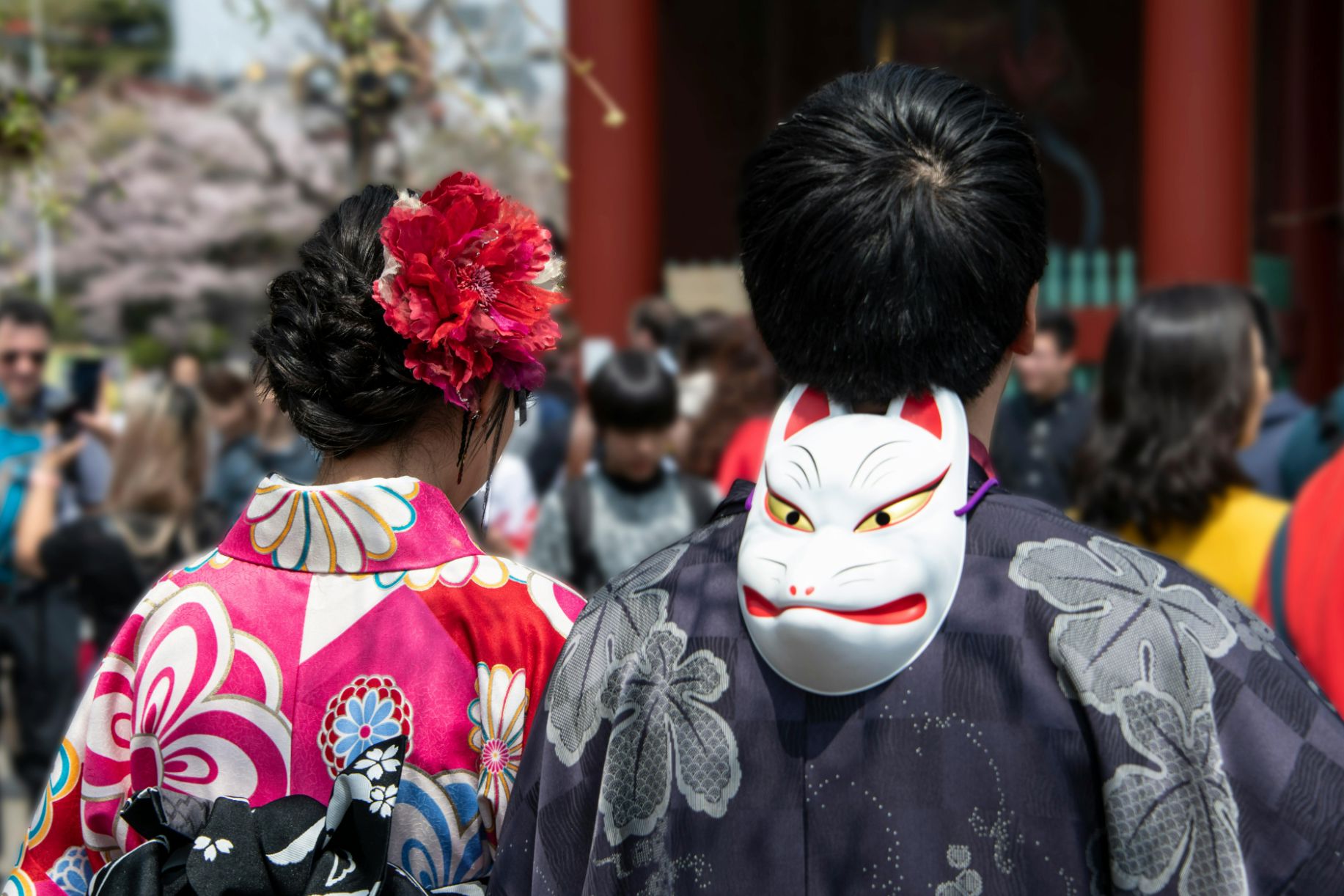
Japanese Minimalist Style: Simple yet Profound Fashion Philosophy
In the ever – evolving world of fashion, where trends come and go at a breakneck pace, Japanese minimalist style stands as a timeless and profound fashion philosophy. It’s not just about the clothes we wear; it’s a statement, a way of life that reflects a deep – seated cultural heritage and a modern – day yearning for simplicity and authenticity.
Origins of Japanese Minimalist Style
Influence of Japanese Culture
Japanese culture is the bedrock upon which minimalist fashion is built. Two significant aspects, Zen Buddhism and traditional Japanese arts, have had a profound impact.
Zen Buddhism and Aesthetics
Zen Buddhism emphasizes simplicity, mindfulness, and the beauty of the present moment. This philosophy seeps into the very fabric of Japanese minimalist style. The concept of “wabi – sabi,” which celebrates the beauty of imperfection, transience, and simplicity, is a core tenet. In fashion, this translates to designs that don’t strive for flawlessness but rather embrace the natural texture of fabrics, the subtle variations in color, and the understated elegance of a simple cut.
Traditional Japanese Arts
Traditional arts such as calligraphy, ikebana (flower arrangement), and kimono design have also played a crucial role. Calligraphy, with its clean and precise lines, has inspired the minimalist approach to silhouette in clothing. Ikebana, which focuses on the balance and harmony of a few carefully selected elements, mirrors the idea of using a limited color palette and a small number of key pieces to create a stylish look. The kimono, with its simple yet sophisticated design, has been a source of inspiration for the use of natural fabrics and the emphasis on comfort and ease of movement.
Core Elements of Japanese Minimalist Fashion
Color Palette
The color palette in Japanese minimalist fashion is a study in restraint and elegance.
Neutral Tones
Neutral tones like white, black, gray, beige, and navy dominate. These colors are not only timeless but also versatile, allowing for easy mixing and matching. White represents purity and simplicity, while black exudes sophistication and formality. Gray offers a subtle and understated look, and beige and navy bring a sense of warmth and calmness.
Limited Color Combinations
Rather than using a riot of colors, Japanese minimalist fashion favors limited color combinations. A monochromatic look, such as an all – white or all – black outfit, is a classic choice. Alternatively, combining two or three complementary neutral tones can create a harmonious and refined appearance.
Silhouettes and Cuts
The silhouettes and cuts in Japanese minimalist fashion are characterized by their clean lines and relaxed fits.
Clean Lines
Clothes often feature straight, unadorned lines. There are no excessive ruffles, frills, or complex patterns. A simple, straight – cut dress or a pair of tailored trousers with a clean hemline exemplifies this aesthetic. These clean lines give the clothing a sense of order and simplicity, making it suitable for both formal and casual occasions.
Relaxed Fits
Unlike body – hugging or overly structured clothing, Japanese minimalist fashion emphasizes relaxed fits. This allows for freedom of movement and a more comfortable wearing experience. Loose – fitting shirts, wide – leg pants, and oversized sweaters are common in minimalist wardrobes. The relaxed fit also adds an element of nonchalance and effortless style.
Fabric Choices in Japanese Minimalist Style
Natural Fibers
Natural fibers are highly prized in Japanese minimalist fashion.
Cotton
Cotton is a popular choice due to its breathability, softness, and durability. It comes in various weights and textures, from lightweight voile for summer clothing to heavier denim for more structured pieces. Cotton can be easily dyed in the neutral tones favored by minimalist fashion, and it ages well, developing a unique patina over time.
Linen
Linen, made from the fibers of the flax plant, is another favorite. It has a natural, textured look and is extremely breathable, making it ideal for warm weather. Linen’s tendency to wrinkle slightly adds to its charm, as it gives the fabric a relaxed and lived – in appearance that aligns with the wabi – sabi aesthetic.
Texture and Quality
In addition to using natural fibers, the texture and quality of the fabric are of utmost importance. High – quality fabrics with a distinct texture, such as a thick woolen tweed or a soft silk crepe, add depth and interest to minimalist clothing. The focus is on the feel and look of the fabric itself, rather than on elaborate designs or patterns.
Japanese Minimalist Style in Contemporary Fashion
Influence on Global Fashion Brands
The influence of Japanese minimalist style can be seen in the collections of many global fashion brands.
Collaboration Examples
Numerous fashion houses have collaborated with Japanese designers or drawn inspiration from Japanese minimalist aesthetics. For instance, some high – end fashion brands have created capsule collections that feature simple, clean – lined pieces in neutral colors, reminiscent of Japanese minimalist fashion. These collaborations not only introduce the style to a wider audience but also elevate the brand’s image by associating it with the sophistication and timelessness of Japanese minimalism.
Adaptation of the Style
Global brands often adapt Japanese minimalist style to fit their target markets. They might incorporate elements such as clean lines and neutral colors while adding their own unique touches, like modern cuts or innovative fabric combinations. This adaptation allows the style to reach a broader range of consumers while still maintaining its core essence.
Street Style and Minimalism
Japanese minimalist style also has a significant presence in street style.
Everyday Wear
On the streets of Tokyo, New York, and other fashion – forward cities, you can see people embracing Japanese minimalist fashion in their everyday wear. A simple white t – shirt paired with wide – leg black trousers and minimalist sneakers is a common and stylish look. This type of outfit is not only comfortable but also makes a bold fashion statement with its simplicity.
Fusion with Other Styles
Street style also showcases the fusion of Japanese minimalist style with other fashion trends. For example, combining minimalist pieces with elements of streetwear, such as a graphic – printed hoodie under a minimalist blazer, creates a unique and edgy look. This fusion shows the versatility of Japanese minimalist style and its ability to adapt to different fashion sensibilities.
Accessories in Japanese Minimalist Fashion
Understated Jewelry
Jewelry in Japanese minimalist fashion is all about being understated.
Simple Metal Pieces
Simple metal pieces, such as a thin gold or silver chain necklace, a delicate bracelet, or a pair of stud earrings, are popular choices. These pieces add a touch of elegance without overpowering the overall look. The focus is on the quality and craftsmanship of the jewelry rather than its size or flashiness.
Subtle Gemstone Accents
Subtle gemstone accents can also be incorporated, but they are used sparingly. A small diamond – studded ring or a necklace with a single, unobtrusive gemstone can add a hint of luxury and color to a minimalist outfit.
Functional Footwear
Footwear in Japanese minimalist fashion is both functional and stylish.
Sneakers and Loafers
Sneakers and loafers are common choices. Minimalist sneakers, with their clean designs and neutral colors, can be paired with a variety of outfits, from casual jeans to more formal dresses. Loafers offer a more polished look and are suitable for both work and social occasions.
Sandals and Flats
For warmer weather, sandals and flats are popular. Simple leather sandals or ballet flats in neutral tones complement minimalist outfits perfectly, providing comfort and a laid – back style.
Styling Tips for Japanese Minimalist Fashion
Building a Capsule Wardrobe
Building a capsule wardrobe is an essential part of embracing Japanese minimalist fashion.
Selecting Versatile Pieces
Choose pieces that can be worn in multiple ways and combined with other items in your wardrobe. A classic white button – down shirt, a pair of black straight – leg trousers, and a navy blazer are all versatile pieces that can form the foundation of many different outfits.
Mixing and Matching Basics
Once you have a collection of basic pieces, experiment with mixing and matching them. You can create a variety of looks, from a casual daytime outfit to an elegant evening ensemble, using just a few key items.
Layering Techniques
Layering is a key styling technique in Japanese minimalist fashion.
Lightweight Layers
In warmer weather, use lightweight layers such as a thin cardigan over a t – shirt or a sheer blouse under a blazer. These layers add depth and interest to your outfit without making it too bulky.
Seasonal Layering
For colder seasons, layer different textures and weights. A woolen sweater over a long – sleeve shirt, paired with a coat, creates a stylish and warm look. Layering also allows you to adapt to changing temperatures throughout the day.
The Psychology Behind Japanese Minimalist Style
Decluttering the Mind
There is a deep psychological aspect to Japanese minimalist style.
Focus on Quality
By reducing the number of items in our wardrobe and focusing on quality pieces, we can declutter our minds. Instead of being overwhelmed by a large number of clothing options, we can make more intentional choices about what we wear. This focus on quality also encourages us to invest in pieces that will last, rather than constantly buying fast – fashion items that quickly go out of style.
Emotional Well – being
Wearing minimalist clothing can have a positive impact on our emotional well – being. The simplicity and elegance of the style can make us feel more confident and at ease. It allows us to express our true selves without the need for excessive adornment or following every passing fashion trend.
Connection with Nature
Japanese minimalist style also has a strong connection with nature.
Natural Elements in Design
The use of natural fabrics and the incorporation of natural colors and textures in clothing reflect a connection to the natural world. Wearing these materials can make us feel more in tune with nature and bring a sense of calm and tranquility.
Environmental Consciousness
In addition, the focus on quality and durability in Japanese minimalist fashion aligns with environmental consciousness. By choosing to buy fewer, better – made pieces, we reduce waste and contribute to a more sustainable fashion industry.
Challenges in Adopting Japanese Minimalist Style
Cultural Differences
Adopting Japanese minimalist style can present some challenges, especially due to cultural differences.
Perception of Minimalism
In some cultures, minimalism may be misinterpreted as being too plain or lacking in style. There may be a preference for more elaborate and ornate clothing, which can make it difficult for some people to embrace the simplicity of Japanese minimalist fashion.
Social Norms
Social norms also play a role. In certain social or professional settings, there may be expectations regarding dress code that don’t align with the minimalist aesthetic. For example, in some workplaces, a more formal and structured style may be required, making it challenging to incorporate minimalist pieces.
Cost and Availability
Cost and availability are also factors to consider.
High – Quality Basics
High – quality minimalist pieces often come with a higher price tag. The use of premium fabrics and the attention to detail in the design and construction mean that these items can be more expensive than mass – produced fast – fashion alternatives.
Limited Options in Some Markets
In some markets, the availability of Japanese minimalist fashion may be limited. There may not be many stores that carry a wide range of minimalist clothing, making it difficult for consumers to find the pieces they want.
Future of Japanese Minimalist Style
Technological Advancements
The future of Japanese minimalist style is likely to be influenced by technological advancements.
Smart Fabrics
The development of smart fabrics, which can have features such as temperature regulation, moisture – wicking, or self – cleaning properties, could be incorporated into minimalist clothing. This would enhance the functionality of the pieces while still maintaining their simple and elegant design.
Digital Design Tools
Digital design tools are also changing the way fashion is created. Designers can use 3D modeling and virtual reality to visualize and refine their minimalist designs more efficiently, potentially leading to new and innovative interpretations of the style.
Sustainability and Minimalism
Sustainability will continue to be an important aspect of Japanese minimalist style.
Ethical Fashion Practices
As consumers become more environmentally and socially conscious, there will be a greater demand for ethical fashion practices. Japanese minimalist fashion, with its focus on quality and durability, is well – positioned to meet this demand. Brands may increasingly adopt sustainable manufacturing processes, use recycled materials, and ensure fair labor practices.
Long – lasting Pieces
The concept of long – lasting pieces will remain central. Consumers will be more inclined to invest in clothing that will stand the test of time, both in terms of style and quality. This will further strengthen the appeal of Japanese minimalist style in the future.
Conclusion
Japanese minimalist style is a fashion philosophy that goes beyond mere clothing. It is a reflection of a rich cultural heritage, a desire for simplicity, and a connection with nature. Its core elements, from the color palette and silhouettes to the fabric choices and accessory styles, create a unique and timeless aesthetic. While there are challenges in adopting this style, such as cultural differences and cost considerations, its influence on contemporary fashion is undeniable. With the advent of technological advancements and the growing focus on sustainability, the future of Japanese minimalist style looks promising. It will continue to evolve and inspire, offering a refreshing alternative in a world often dominated by fast – paced fashion trends.
FAQs
- Is Japanese minimalist style only suitable for certain body types?
No, Japanese minimalist style is highly versatile and can flatter a wide range of body types. The emphasis on relaxed fits and clean lines can create a streamlined and elegant look for everyone. The key is to choose pieces that fit well and complement your body shape.
- Can I incorporate Japanese minimalist style into my work wardrobe?
Absolutely! You can use minimalist pieces such as tailored trousers, simple blouses, and classic blazers to create professional – looking outfits. Add understated accessories, and you’ll have a stylish and appropriate work wardrobe that adheres to the minimalist aesthetic.
- How do I start building a Japanese minimalist wardrobe on a budget?
Start by looking for basic pieces in neutral colors at affordable stores. Focus on quality within your budget, and look for sales or second – hand options. You can gradually add more pieces over time and build a capsule wardrobe that reflects the Japanese minimalist style.
- Are there any specific rules for accessorizing in Japanese minimalist fashion?
The main rule is to keep it understated. Choose simple, high – quality accessories that don’t overpower the outfit. A few well – chosen pieces, such as a delicate necklace or a pair of classic earrings, can enhance the overall look without detracting from its simplicity.
- How does Japanese minimalist style differ from other minimalist styles?
Japanese minimalist style is deeply rooted in Japanese culture, with influences from Zen Buddhism and traditional arts. It often features natural fabrics, a more muted color palette, and a focus on the beauty of imperfection. While other minimalist styles may share some common elements, Japanese minimalism has its own unique cultural and aesthetic identity.

